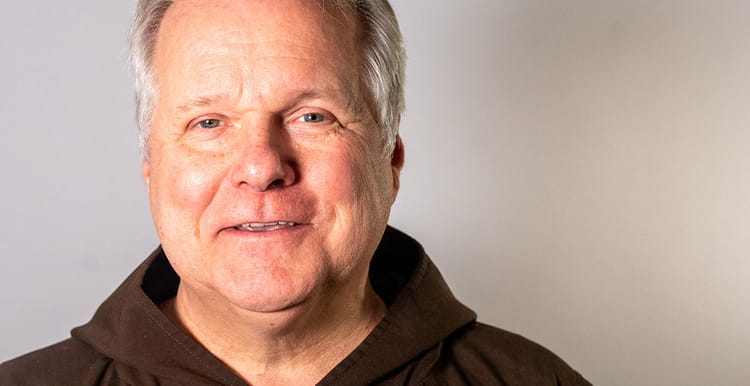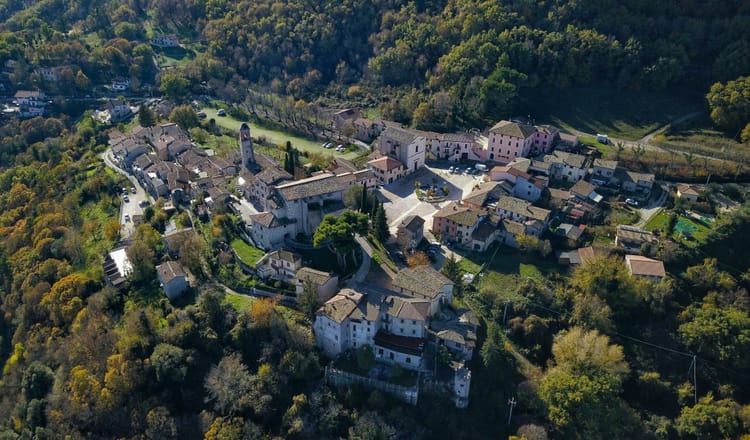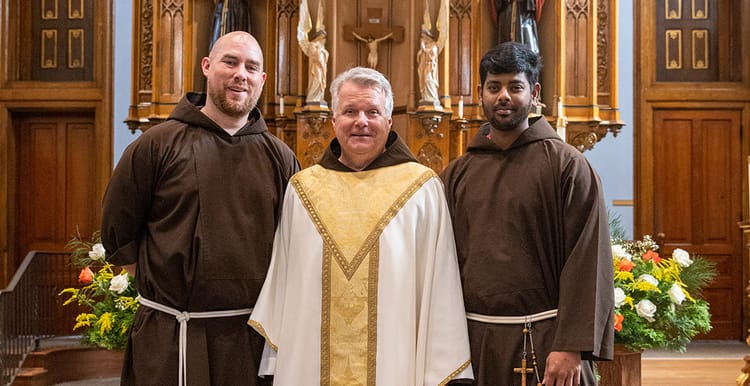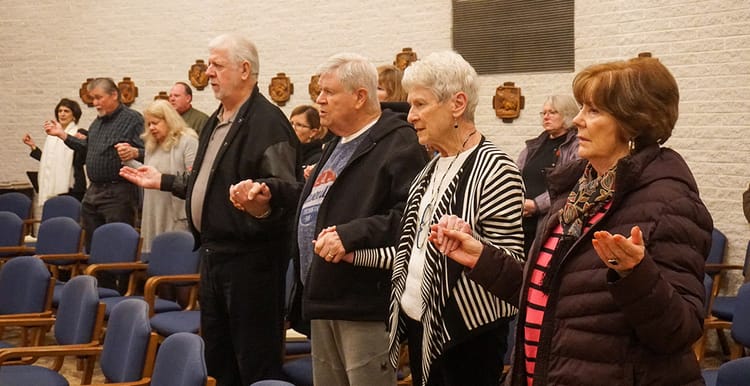Ministering Among the Apsáalooke
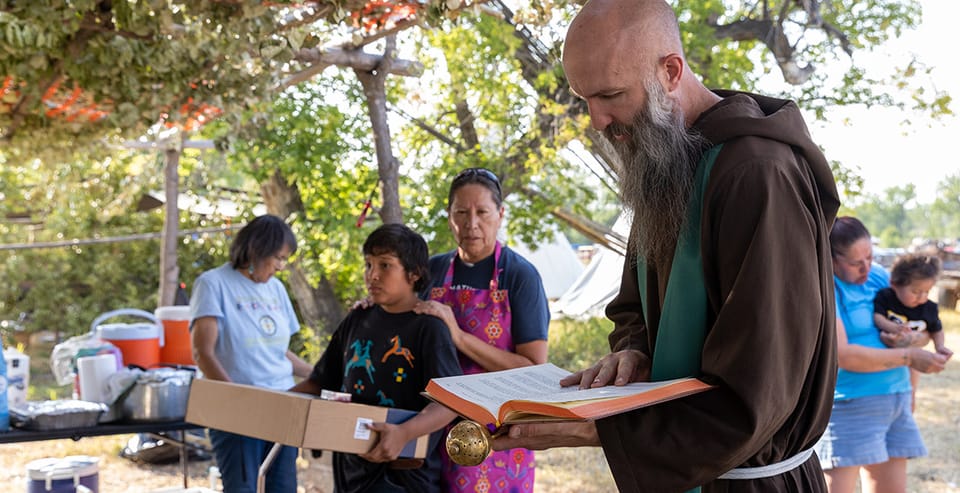
Friars Jerry Cornish, OFM Cap., Mike Dorn, OFM Cap. and Thomas Skowron, OFM Cap. minister as a team among the Apsáalooke (Crow) Nation in southeast Montana. The town of Crow Agency is the home base, with the parishes of St. Dennis, Our Lady of Loretto, St. Francis Xavier, and St. Charles Borromeo serving the area faithful, along with two Catholic schools and St. Katharine’s Friary as the place the friars call home. The Crow Indian Reservation is nearly 3,600 square miles with a population of 7,900 out of the total 11,000 enrolled tribe members living on the reservation.
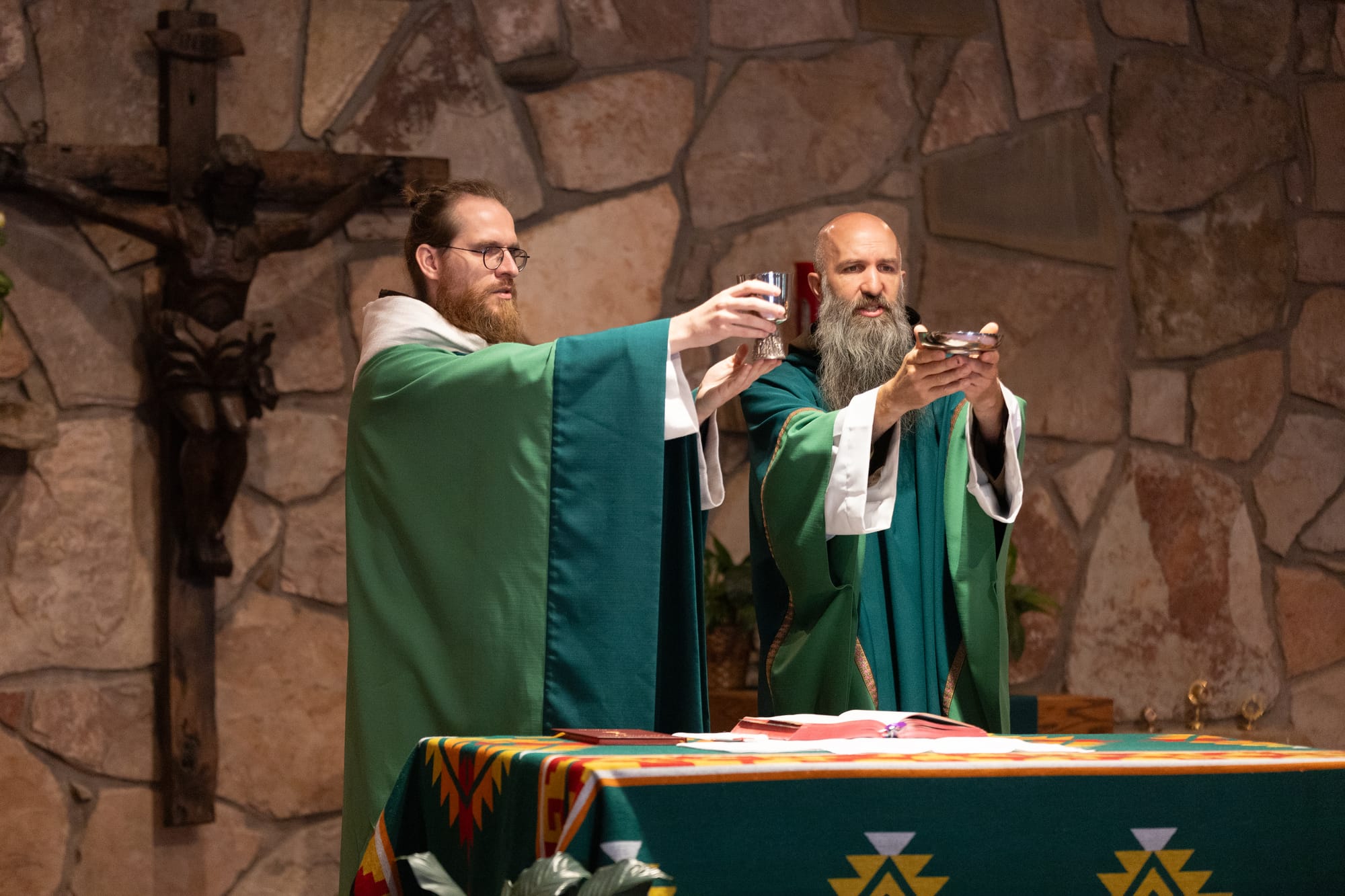
To give a sense of its remoteness, that’s a population density of roughly two tribe members per square mile. The Capuchin charism includes accompanying those who have been forgotten and marginalized. There might not be a more forgotten and marginalized group in the United States than the First Nations. Ministering among indigenous tribes requires a steady presence, commitment and openness. It takes time to build relationships and "to hopefully learn about their joys and dreams, their sorrows and to see their great resilience in the face of generational trauma,” said Br. Mike Dorn, OFM Cap. It also takes humbly acknowledging that trust is earned and not freely given. “It’s only with time, and it takes at least a year before an outsider like myself can even begin to understand what role we might have, where everything kind of settles,” said Dorn. “Given the complicated history of Christianity and First Nations in the Americas, the Apsáalooke people have been very open to the priests and sisters who have come to the reservation.”

Life in Crow Country is one of triumph and tragedy. There is material poverty, but there is spiritual richness. There is depression and addiction, but there is also healing and recovery, joyfulness and laughter. Life on the reservation defies stereotypes and the nuances they too often ignore.
The joy is on full display every summer at Crow Fair. Much like a state fair, the event features dance celebrations, rodeos, and daily parades. “The people are very relationship-centered, and their wealth is within their children.

Thus they have found ways to keep their traditions alive. Crow Fair demonstrates those values and their pride with how it incorporates their families and clans,” said Dorn. "It’s a sacred time for many families camping around the dance arbor, including ceremonies in which an elder may give an Apsáalooke name to a grandchild. It’s a true honor to witness such blessings."
The friars also minister at the adjacent Northern Cheyenne Reservation. We'll take you there in the next issue of Sandal Prints.

